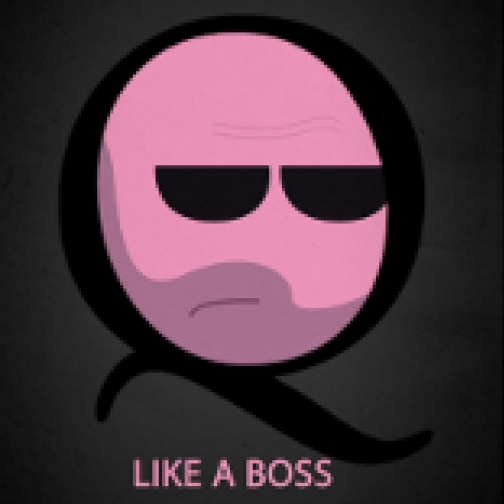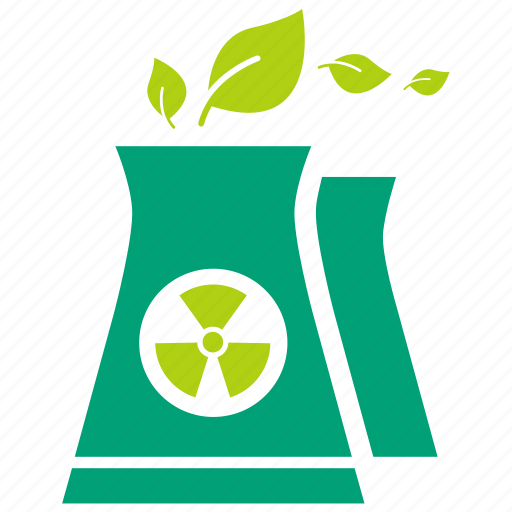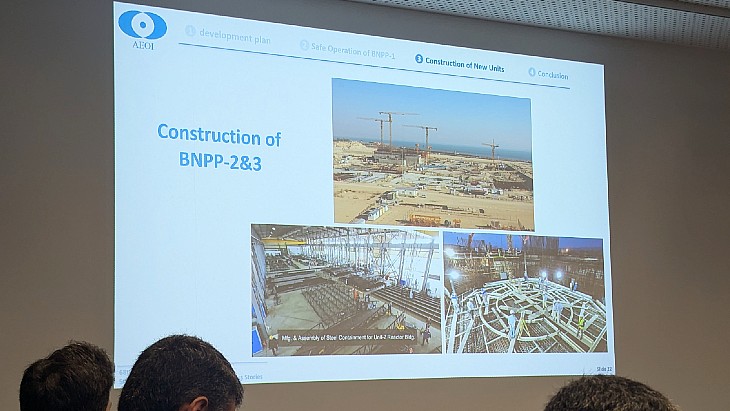Iran says it has three nuclear energy reactors under construction, with site and technology selection processes under way for more - and has also outlined planned nuclear fuel cycle and research reactor developments.
The Atomic Energy Organization of Iran’s plans for its nuclear energy sector were highlighted at a side event at the International Atomic Energy Agency’s General Conference in Vienna.
A Russian-designed VVER unit with a capacity of 915 MWe is already in operation at Bushehr on the Persian Gulf coast. Two further units featuring VVER-1000 units are planned. It said unit 2, which had first concrete poured in 2019 and the core catcher installed this month, has a scheduled installation of its reactor pressure vessel “30 months later”, and physical start-up scheduled for 55 months later, which would be in 2029. The plan is for first concrete for unit 3 in the last quarter of 2024.
The country’s goal is to reach 20 GW of nuclear energy capacity by 2040 and the meeting heard that site selection and planning was taking place for an unspecified number of other plants. Earlier this year the AEOI announced the start of work at a site in Hormozgan province that it says will eventually be home to four new nuclear reactors.
During the series of presentations in the event 50 Years of Nuclear Technology in Iran: Success Stories, the country’s history with research reactors was also highlighted, as well as plans to develop the domestic fuel cycle capabilities.
Research reactors
The Tehran Research Reactor is a 5 MW pool-type research reactor which has operated since 1967 and been used for research reactor purposes and also radioisotope production. New applications developed for it in recent years, the event also heard, include gem colouring in 2017, neutron imaging in 2019 and fuel irradiation and testing from 2020.
A replacement research reactor, the 10 MW Isfahan Research Reactor (IRR10), is being built “based on the expertise and knowledge of Iranian experts”. Construction began in 2022 and the main utilisations are expected to be fuel testing and radioisotope production. There is also a plan to establish “an international nuclear science and technology training centre”.
The applications of the research reactors such as for medical use, pest control, irradiation, disinfection and food safety, were also highlighted.
There are currently six irradiation sites in operation and a similar amount under construction with the aim of slashing the 30% of agricultural product currently lost and boosting food safety, with irradiation of spices specifically mentioned.
Other applications included a plant breeding department, developing cotton, soybean, rice, tangerines and ornamental plants as well as new organic fertilisers and use of the sterile insect technique to tackle pests, among other applications:
Nuclear fuel cycle
The meeting heard that the country has open pit mines at Khoshuomi, Narigan and Saghand, plus Ardakan Yellowcake Production Plant and Saghand Yellowcake heap-leaching plant. The session heard that the plan is to design and fabricate fuel for the Tehran, Isfahan and Modernised Arak Research Reactor and the “Darkhovein Power Reactor (IR-300)” in the next five years. The Darkhovein - also known as Darkhovin - reactor is a proposed Iranian-designed 300 MW power reactor.
In order to achieve the planned 20 GW of capacity by 2040, the meeting was told that a number of steps have been, or are, necessary:
- Aerial exploration of uranium mines across more than half of the surface area of Iran
- Design and construction of uranium ore processing plant and yellowcake production unit (heap leaching system)
- Design and construction of a conversion plant to produce uranium oxide and UF6,
- Design and construction of a zirconium cladding, fuel rod, and fuel assembly manufacturing plant for light water reactors and plate-type fuel for the Tehran research reactor, including quality control and pre-irradiation testing
- Design and construction of infrastructure for the irradiation of fuel samples and post-irradiation testing
The country is also developing accident tolerant nuclear fuel, and looking at the design and construction of pre-disposal and near surface disposal facility for low and intermediate level radioactive waste.
Cooperation with the IAEA and Non-Proliferation
The presentation focused on the achievements and plans Iran says it has for the peaceful uses of nuclear energy, and details were given of the many areas of cooperation with the International Atomic Energy Agency and World Association of Nuclear Operators over the past 50 years:
Elsewhere at the IAEA’s General Conference, the status of the country’s non-proliferation treaty actions was covered. IAEA Director General Rafael Mariano Grossi said: “With regard to the NPT Safeguards Agreement, it is a matter of concern that significant safeguards issues remain outstanding after a number of years and that we appear to have reached an impasse. Iran’s implementation of the activities set out in the Joint Statement between myself and Iran in March last year has stopped. However, my correspondence so far with the new government has been constructive and open and I hope to visit the country in the not-too-distant future … it is critical that the Agency is able to provide credible assurances that Iran’s nuclear programme is exclusively peaceful.”
In his statement to the general conference, Mohammad Eslami, Vice-President of the Islamic Republic of Iran and President of the Atomic Energy Organization of Iran, said that “the realisation of a Zone Free of Nuclear Weapons in the Middle East has become more important than ever” and added “the cooperation of the Islamic Republic of Iran with the Agency continues in an honest and extensive manner. The number of the Agency’s designated inspectors in Iran is incomparable to any other Member States. More than one fifth of all inspections carried out by the Agency across the world in 2023 took place in Iran over our nuclear facilities, while Iran’s nuclear facilities constitute only three percent of the total number of nuclear facilities worldwide”.


